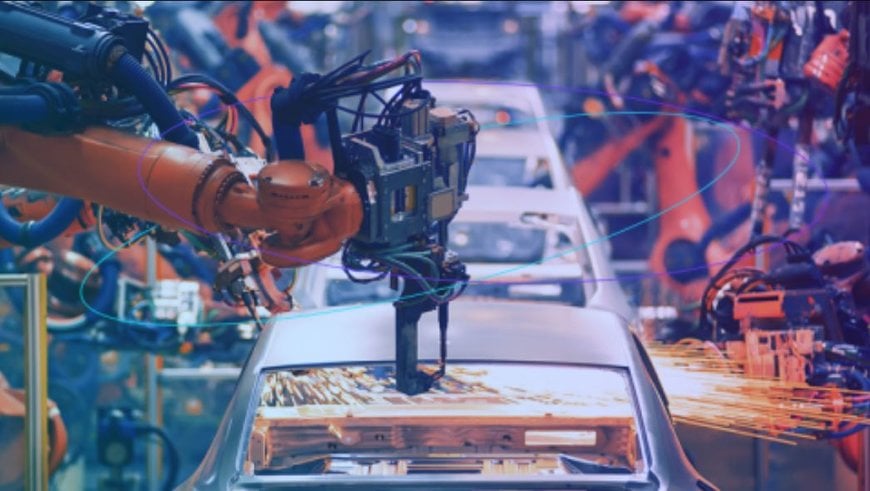www.industryemea.com
20
'20
Written on Modified on
GREIF DIGITIZES GCUBE CONNECT IBC VIA SIGFOX 0G NETWORK
Greif – a global leader in industrial packaging products and services – is now offering its GCube Connect IBCs (Intermediate Bulk Containers), which are used for the storage and transport of liquids and free-flowing materials, with Sigfox 0G network connectivity.

Level sensors from Nanolike are at the heart of the 0G-connected solution that is scheduled to be sold in the range of several millions annually. With IBC digitization, users gain full transparency and real-time insight in their processes, which they can leverage to increase the efficiency of their IBC deployments and the entire material logistics. It also enables manufacturers and distributors using IBCs to create completely new service offerings and business models:
- Manufacturers can offer dealers and end customers vendor-managed inventory solutions that are solely based on geolocation monitoring, even for larger inventories.
- Chemical dealers can automatically replace or restock IBCs at end customers’ premises based on fill levels.
- IBC refills can be offered via a subscription model on a pay-per-use basis, where customers are billed according to their actual consumption.
- In the food and beverage or also the dangerous goods industry, batches can be documented automatically – tamper-proof via block chains, if necessary – which promises significantly more efficient traceability and HACCP documentation.
- The pharmaceutical industry can digitize its GDP (Good Distribution Practice) documentation.
- In agriculture, IBC digitization can provide protection against counterfeit seeds through unique identification, digitized seals to detect if a IBC is opened, and documentation that includes location recording.
These are just a few examples of the advantages of digitized IBCs, which are also used in many other industries than the ones already mentioned, for example as containers for oils and lubricants, tires and automotive parts, paints, inks and dyes, synthetic and natural rubber, as well as pharmaceuticals, personal care items and cosmetics.
“The decision by one of the world’s leading IBC manufacturers to digitize their containers, as part of their service portfolio, heralds a revolution in tracking and fill level monitoring of liquids across the chemical, pharmaceutical and many other supply chains,” explains Glen Robinson, SVP Global Sales & Marketing at Sigfox. “The Sigfox IoT architecture and our global 0G network allow Nanolike to connect their unique sensor technology, so clients can visualize and optimize IBCs across their entire business. This opens up a digital revolution in fill level monitoring, geolocation and tracking of liquids across international supply chains. Digitizing IBCs makes the once invisible visible, increasing the utilization of IBCs, reducing loss, automating procurement & inventory management, and promoting on-demand logistics scheduling. Sigfox is delighted to be a part of this exciting development with Nanolike and Greif.”
“We have chosen the Sigfox 0G network for the digitization of our GCube Connect IBC solutions because it is currently the most energy efficient. This is immensely important because it keeps maintenance costs extremely low. The sensor batteries need changing only after about 5 to 7 years. In addition, the network is also very cost-efficient, is offered globally without roaming fees, and is already available in over 70 countries, with further expansion planned. For us as a global supplier of industrial packaging products and services, all this is extremely important. Anything that can be covered with 12 bytes and 140 messages per day is therefore best served with Sigfox,” explains Luca Bettoni, EMEA IBC and Plastic Business Product Manager at Greif.
The digitization of IBCs also plays a role for Greif when it comes to one of the company’s guiding principles: sustainability. Over the past decade, Greif has focused much of its innovation strategy on developing products that use fewer new raw materials and more recycled content, while continuing to meet performance requirements, helping everyone achieve key waste reduction goals. The GCube Connect IBC (also made with a percentage of recycled polyethylene), for example, is a significant development in this area. Reducing unnecessary transport, consumption-based refill-as-a-service can also make fleet operations much more efficient if refills are route-optimized thanks to real-time information, cutting CO2 and particulate emissions in the process. Greif expects an increase in efficiency of around 10-20 percent from its IBC digitization, especially for dealers.
www.sigfox.com

